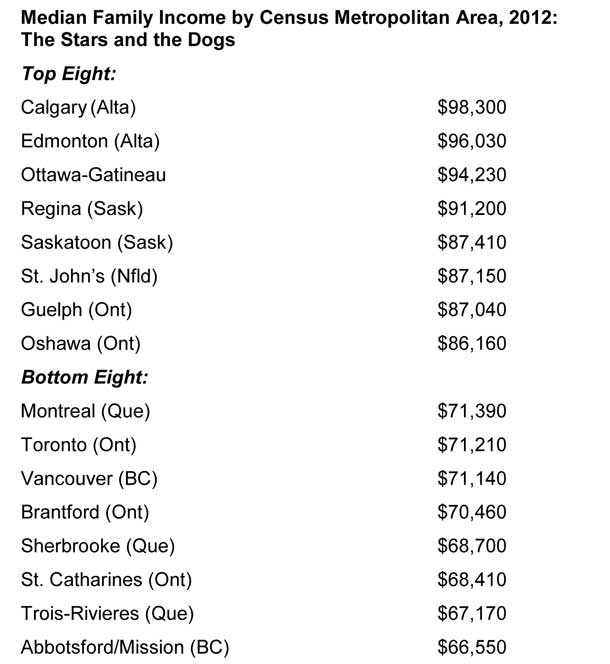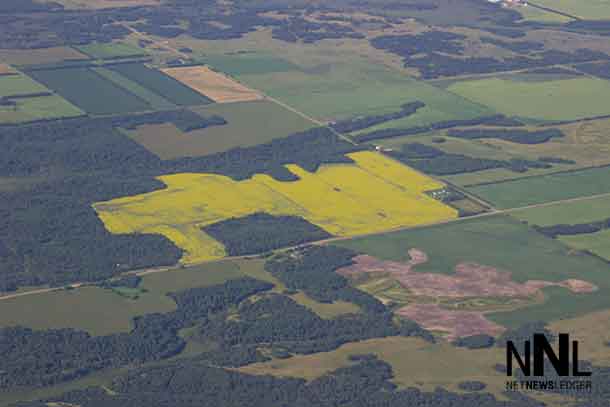 THUNDER BAY – OPINION – Statistics Canada’s latest tabulation of incomes by city confirms in hard data what we often discern through casual observation: we live in an economically diverse country, one in which incomes vary greatly among households but also across communities.
THUNDER BAY – OPINION – Statistics Canada’s latest tabulation of incomes by city confirms in hard data what we often discern through casual observation: we live in an economically diverse country, one in which incomes vary greatly among households but also across communities.
As in previous years, the agency has collected and published information on incomes for 33 metropolitan areas. This includes data on “census families” – defined as a married or common law couple with or without children at home, or a lone parent with one or more dependent children. For each urban area, Statistics Canada estimates the median pre-tax census family income for 2012. Median refers to the exact mid-point of the income distribution: half of families have incomes above, and half below, the reported median. The median is a good measure of the financial resources available to a “typical” family, in part because it isn’t distorted by the abnormally high incomes that accrue to a small number of families at the very top of the distribution.
For Canada as a whole, median pre-tax family income stands at $74,540, measured in constant 2012 dollars. The table below shows typical family incomes for the eight richest and eight least affluent metropolitan areas in the country. The figures are for pre-tax income at the household (not individual) level. For most people, income and payroll taxes are deducted from their pre-tax income. They then have to pay sales, fuel, property, and other taxes, fees and levies imposed by government from what’s left.
The gaps between the best and worst performers are substantial. The median family in Calgary pulled down more than $98,000 in 2012, about $25,000 higher than the national figure (and almost $32,000 more than the typical family in the bottom ranked metropolitan area, Abbotsford-Mission). Edmonton is not far behind, with a median family income of $96,030 before tax, followed by Ottawa-Gatineau and then the two main cities in Saskatchewan. The strong showing of Regina and Saskatoon reflects the province’s buoyant economy and enviable basket of export-oriented commodity industries. Indeed, Saskatchewan has been climbing the Canadian prosperity ladder over the past decade – to the point where it has now surpassed Ontario and British Columbia on both average income and the value of economic output per person.
At the other end of the income scale are Canada’s three largest urban areas – Vancouver, Toronto and Montreal – along with a few smaller cities in Quebec and Ontario and the aforementioned B.C. community of Abbotsford-Mission.
It is striking that the metropolitan areas of Vancouver, Toronto and Montreal all lag behind Calgary by roughly $27,000, and trail Edmonton by almost $25,000. Canada’s three leading metros are home to over one-third of the country’s population, including many poor residents. They all experience large inflows of immigrants every year, which tends to put downward pressure on reported incomes. Contrary to what some people may believe, most newcomers to Canada struggle in the job market and have below-average incomes for at least the first decade after their arrival. True, some immigrants with low reported incomes are actually wealthy, but that doesn’t describe the situation of the bulk of immigrant families.
Greater Vancouver’s and Toronto’s disappointing rankings on median family income take on added significance when considering the issue of housing costs. According to the Royal Bank’s latest report on “housing trends and affordability,” homeownership costs relative to median pre-tax incomes in Greater Vancouver and Metro Toronto are by far the highest in the country across all housing categories (detached bungalows, standard-two story homes, and condominiums).
Juxtaposing expensive housing with mediocre incomes underscores the point that large numbers of households in the Vancouver and Toronto areas face an ongoing financial squeeze; many may never become home-owners, unless they re-locate to communities where median incomes are higher and housing is cheaper. The rising proportion of recent immigrants who have chosen to settle in Alberta and Saskatchewan suggests more people are coming to realize that opportunities to achieve a middle-class income and lifestyle arguably are better outside of the country’s biggest metropolitan regions.
Jock Finlayson is Executive Vice President of the Business Council of British Columbia.
Source: Troy Media
Thunder Bay’s median family income in 2012 was $80,680












